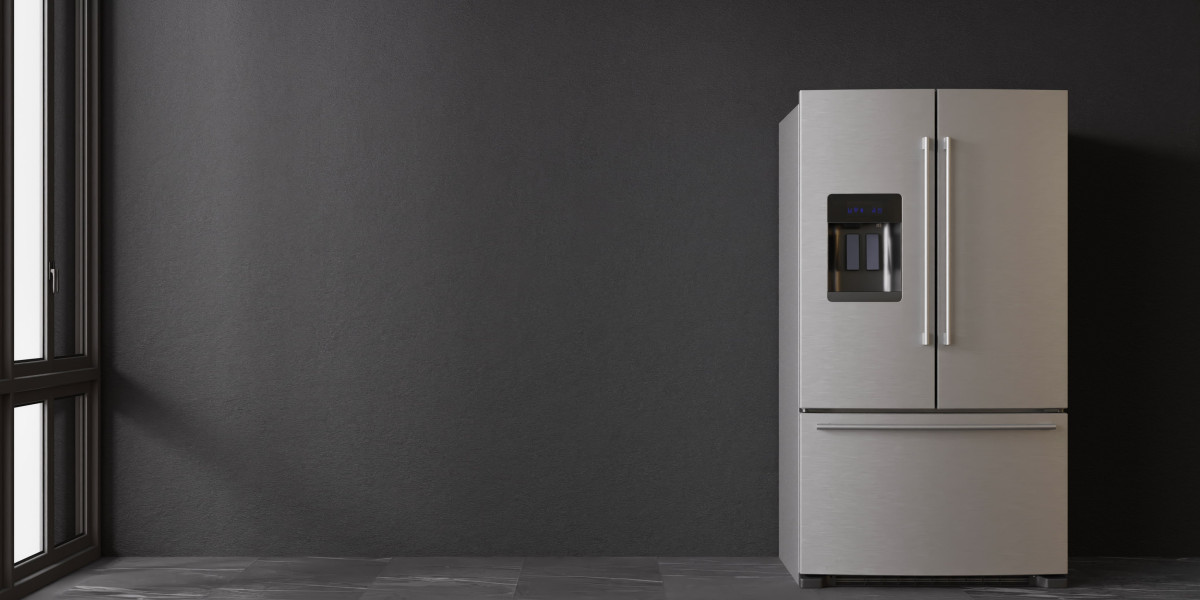
Unfolding Solutions: A Guide to Bifold Door Repairs
Bifold doors, with their concertina-like design, provide a fantastic blend of space-saving functionality and visual appeal. Whether beautifying a closet, dividing rooms, or opening up patios to the outdoors, these doors bring a special touch to any area. Their capability to nicely fold away, maximizing access and light, makes them a popular choice in modern-day homes and business settings alike. However, like any moving part within a structure, bifold Door restoration (www.repairmywindowsanddoors.co.uk) doors are prone to wear and tear with time. From small inconveniences like sticking or squeaking to more substantial problems like drooping or damaged panels, issues can occur that disrupt their smooth operation and interfere with their designated function.
Comprehending common bifold door issues and understanding how to resolve them is crucial for maintaining their performance and durability. This article intends to be your extensive guide to bifold door trouble door repairs. We'll explore the common perpetrators behind bifold door renovators door malfunctions, look into DIY repair possibilities, and talk about when it's best to employ the specialists. By equipping yourself with this knowledge, you can guarantee your bifold doors continue to run flawlessly and boost your living or workplace for years to come.
Common Bifold Door Problems: Identifying the Issues
Before you can embark on any repairs, it's essential to precisely identify the issue impacting your bifold doors. Recognizing the symptoms and understanding their prospective causes will simplify the repair process and avoid unnecessary work. Here are a few of the most regularly encountered concerns with bifold doors:
Difficulty Opening or Closing: This is possibly the most typical grievance. The door may feel stiff, withstand motion, or get stuck at particular points along its track. This can frequently come from a number of elements, consisting of:
- Dirty or Obstructed Tracks: Dust, particles, and even small items can accumulate in the tracks, impeding the smooth glide of the rollers.
- Dry or Damaged Rollers: Rollers are essential for the simple and easy motion of bifold doors. Lack of lubrication, wear and tear, or damage can cause them to stick or grind.
- Misalignment: If the door panels or track are misaligned, the doors might bind and have a hard time to open or close correctly.
- Obstructions within the Doorway: Sometimes, the problem isn't with the door itself but with something blocking its course, like a carpet that has actually shifted or items positioned too near the opening.
Drooping Doors: Over time, bifold doors can start to sag, making them tough to operate and possibly causing them to scrape along the flooring or frame. This sagging is typically attributable to:
- Loose Hinges: Hinges are essential for supporting the weight of the door panels. Loose hinges can result in sagging and misalignment.
- Inadequate Support: If the door frame or track isn't supplying enough support, the weight of the doors can cause them to sag.
- Door Weight: In some cases, the doors themselves might be too heavy for the hardware, especially if they are strong core or made from heavier products.
Harmed Panels: Bifold door panels, especially those made of thinner products like hollow-core wood or MDF, can be prone to damage:
- Cracks and Dents: Impacts or unintentional force can lead to cracks or damages in the panels.
- Water Damage: In areas susceptible to wetness, or in restrooms, panels can warp or swell due to water ingress.
- Surface area Damage: Scratches, chips, or peeling veneer can interfere with the door's appearance.
Hardware Issues: The various hardware parts of bifold doors are essential for their function. Problems with these can lead to operational problems:
- Loose or Broken Hinges: As pointed out, loose hinges contribute to drooping, and damaged hinges can render the door unusable.
- Faulty Handles or Latches: Broken deals with or latches can make it tough to open, close, or secure the doors.
- Harmed Pivot Points: The pivot points where the doors fold are vital for smooth motion. Damage or wear here can trigger tightness and sticking.
Track Problems: The track is the foundation upon which the bifold doors run. Concerns here will straight impact door function:
- Bent or Damaged Track: Accidental effects or settling of the structure can flex or damage the track, preventing roller movement.
- Misaligned Track: If the track is not effectively installed or has shifted, the doors will not run smoothly.
Spaces and Draughts: Bifold doors are developed to close fairly comfortably. Gaps or draughts show a problem:
- Misalignment: Misaligned panels may not satisfy effectively, creating spaces.
- Used Weather Stripping: Weather stripping around the door perimeter assists seal gaps. If damaged or worn, it will stop working to provide a correct seal, leading to draughts and potentially increased noise.
Sound Issues: Bifold doors ought to run fairly quietly. Squeaking, grinding, or rattling sounds indicate friction or loose components:
- Dry Rollers or Hinges: Lack of lubrication in rollers or hinges often causes squeaking or grinding noises.
- Loose Hardware: Loose screws or other hardware can trigger rattling noises when the doors are moved.
Do it yourself vs. Professional Repair: Choosing the Right Approach
When you've identified the issue, the next action is to choose whether you can deal with the repair yourself or if it's finest to call in an expert. The choice typically depends on several factors:
DIY Repairs - Pros and Cons:
Pros:
- Cost-Effective: DIY repairs can save you cash on labor expenses, frequently requiring only the expense of replacement parts or standard tools you might currently own.
- Convenience: You can frequently attend to small repairs at your own rate and schedule, without waiting on a contractor visit.
- Learning Experience: DIY repairs can be a valuable knowing experience and provide you a higher understanding of how your bifold doors operate.
Cons:
- Time Commitment: DIY repairs can be time-consuming, especially if you are unknown with the procedure.
- Prospective for Mistakes: Incorrect repairs can get worse the problem or even damage the doors even more, potentially causing more pricey professional intervention later.
- Tool Requirements: Certain repairs may need customized tools that you may not have.
- Safety Concerns: Repairs involving ladders, heavy doors, or power tools can position security threats if not handled correctly.
Expert Repairs - Pros and Cons:
Pros:
- Expertise and Experience: Professionals have the understanding and experience to precisely detect and efficiently repair a large range of bifold door issues.
- Performance: Professionals can generally finish repairs quickly and effectively, minimizing interruption.
- Warranties and Warranties: Reputable professionals typically provide assurances or warranties on their work, supplying comfort.
- Specialized Tools and Parts: Professionals have access to specialized tools and a broader variety of replacement parts if required.
Cons:
- Higher Cost: Professional repairs will inevitably be more pricey due to labor costs and potential call-out costs.
- Setting up Inconvenience: You may require to set up a visit and wait for an expert to become available.
When to DIY vs. When to Call a Pro:
DIY Suitable For:
- Simple tasks like cleaning tracks and rollers.
- Lubing hinges and rollers.
- Tightening up loose screws.
- Changing quickly available and basic hardware parts (rollers, manages).
- Minor cosmetic repairs like retouching paint or filling small damages.
Expert Recommended For:
- Complex issues like door or track misalignment that need exact adjustments.
- Sagging door problems that may include structural support or hinge replacements.
- Replacement of entire panels or doors, particularly if they are bespoke or require precise fitting.
- Repairs including damage to the frame or structural components.
- Any repair that feels beyond your ability level or convenience zone, especially those involving safety concerns.
Step-by-Step Repair Guides for Common Issues
While some repairs need expert competence, many common bifold door issues can be resolved with a little DIY knowledge. Here are detailed guides for tackling some of the most frequent issues:
1. Resolving Sticking or Difficult Opening/Closing:
* ** Step 1: Inspect and Clean the Tracks. **.* Use a vacuum cleaner with a crevice tool or a brush to thoroughly clean up the leading and bottom tracks of any dust, debris, or obstructions.* ** Step 2: Lubricate Rollers and Tracks. **.* Apply a silicone-based lube to the rollers and along the tracks. Prevent oil-based lubricants, as they can draw in dust.* Operate the doors numerous times to disperse the lube evenly.* ** Step 3: Inspect Rollers for Damage. **.* Visually check each roller for fractures, chips, or excessive wear.* If rollers are harmed, they will require to be replaced (see hardware replacement section listed below).* ** Step 4: Check for Obstructions. **.* Ensure absolutely nothing is physically blocking the door's path, inside or outside the doorway.2. Replacing Worn or Damaged Rollers:
* ** Step 1: Identify Roller Type and Size. **.* Carefully eliminate a sample roller to identify the type (e.g., top-hung, bottom-roller) and its dimensions.* ** Step 2: Purchase Replacement Rollers. **.* Visit a hardware store or online supplier to acquire matching replacement rollers.* ** Step 3: Remove Old Rollers. **.* Depending on the design, you might need to loosen or unclip the old rollers. Refer to your door's setup instructions if offered.* ** Step 4: Install New Rollers. **.* Carefully insert and protect the new rollers in location, ensuring they are appropriately lined up and move freely.* ** Step 5: Test Door Operation. **.* Gently run the doors to inspect if the brand-new rollers have actually fixed the sticking concern. Lubricate as required.3. Tightening Loose Hinges:
* ** Step 1: Identify Loose Hinges. **.* Visually inspect all hinges linking the door panels for looseness or motion.* ** Step 2: Tighten Screws. **.* Use a screwdriver of the appropriate size to thoroughly tighten any loose screws on the hinges.* Avoid over-tightening, which can remove the screw holes.* ** Step 3: Consider Longer Screws (if needed). **.* If screws constantly loosen up, it may be necessary to replace them with a little longer screws to get a better grip in the door frame or panel.* ** Step 4: Test Door Operation. **.* Check if tightening up the hinges has enhanced door positioning and reduced sagging.Preventive Maintenance: Keeping Your Bifold Doors in Top Shape
Routine maintenance is essential to avoiding many bifold door issues and extending their lifespan. Integrating these easy upkeep practices can conserve you time and money in the long run:
- Regular Cleaning: Clean the tracks and door panels routinely (at least monthly, or more regularly in dirty environments) to avoid particles buildup.
- Lubrication: Lubricate rollers and hinges with silicone lubricant every few months to ensure smooth and peaceful operation.
- Hardware Checks: Periodically check all screws and hardware elements for tightness and tighten as required.
- Visual Inspections: Regularly check doors for signs of damage, wear, or misalignment. Address minor concerns immediately before they escalate.
- Mild Operation: Avoid slamming or requiring the doors, as this can harm hardware and cause misalignment.
Expense Considerations for Bifold Door Repair
The expense of bifold door repair can vary commonly depending on the nature of the problem, whether you DIY or hire an expert, and the cost of parts.
Do It Yourself Repair Costs:
- Primarily product costs, consisting of:
- Replacement rollers, hinges, deals with: Prices range from a couple of dollars for individual elements to sets costing ₤ 20- ₤ 50 or more.
- Lubricant, cleaning supplies: Relatively low-cost.
- Tools (if you need to purchase any): Basic screwdrivers are low-cost; specialized tools might contribute to the cost.
Expert Repair Costs:
- Include labor costs in addition to parts.
- Per hour rates for handymen or door repair professionals can vary from ₤ 50 to ₤ 100 or more, depending upon area and complexity.
- Call-out fees may use.
- More complex repairs (e.g., panel replacement, considerable adjustment) will naturally be more costly.
Elements Influencing Repair Costs:
- Complexity of the Problem: Simple repairs like cleansing and lubrication will be the least pricey. Major repairs or replacements will be more pricey.
- Do it yourself vs. Professional: DIY is often less expensive for basic repairs.
- Parts and Materials: The cost of replacement parts will differ depending upon the type and quality.
- Area: Labor expenses can vary based on your geographical location.
- Emergency situation Repairs: Emergency or after-hours repairs might sustain service charges.
Bifold doors are a valuable asset to any residential or commercial property, using performance and style. By understanding typical concerns, knowing when to DIY and when to seek professional aid, and practicing regular upkeep, you can keep your bifold doors operating efficiently and looking their finest for several years to come. Resolving minor problems immediately is constantly much better than overlooking them up until they become significant, more costly headaches. Take the time to understand your bifold door repair near me doors, and they will continue to unfold benefit and charm in your area.
Frequently Asked Questions: Bifold Door Repair
Q: How do I know if I can DIY a bifold door repair or if I require to call an expert?
A: Start by assessing the problem. If it's an easy problem like sticking doors that might be solved with cleaning and lubrication, or replacing a visible and easily available roller or handle, DIY may be appropriate. If the issue is structural, involves misalignment, panel replacement, or anything that feels beyond your skill level, it's certainly best to call an expert. Consider your convenience level with DIY jobs and focus on security.
Q: How much does bifold door repair normally cost?
A: DIY repairs can cost as low as a few dollars for lube or replacement rollers. Expert repairs can vary from ₤ 50 to numerous hundred dollars depending upon the complexity of the concern, labor rates, and parts required. Get quotes from numerous experts for larger repairs to compare expenses.
Q: What tools are generally required for fundamental bifold door repairs?
A: For a lot of fundamental repairs, you'll need:
- Screwdrivers (Phillips and flathead in different sizes)
- Vacuum cleaner with crevice tool
- Brush or tooth brush (for cleaning tracks)
- Silicone-based lubricant
- Possibly pliers or wrenches, depending upon hardware.
- Security glasses and gloves are always recommended.
Q: How often should I oil my bifold doors?
A: It's normally suggested to lube rollers and hinges every 3-6 months, or more regularly if you see any squeaking, sticking, or tightness in operation.
Q: Can I replace a bifold door panel myself?
A: Replacing a single bifold door panel can be complicated, particularly if it requires exact matching of size, style, and hardware. It may be DIY-able if you are comfortable with woodworking and have the necessary tools and abilities. However, it's typically suggested to look for expert help for panel replacements, particularly if the doors are custom-made or require accurate fitting within the track system. Specialists can likewise make sure appropriate positioning and avoid further concerns after panel replacement.








